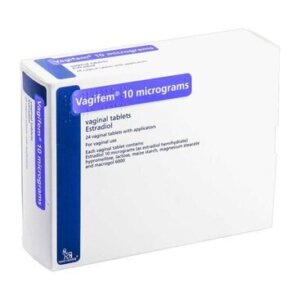
Every year in May, the Asthma and Allergy Foundation of America (AAFA) introduces a program of education and information that aims to raise awareness of these widely prevalent ailments.
May was very intentionally chosen as the focus of National Asthma and Allergy Awareness Month when the AAFA launched the program in 1984 because, in the Northern Hemisphere, it sits right in the middle of the Spring season. Due to the prevalence of allergies and sensitivities to pollen, grass, and new seasonal foods, there has always been a surge in asthma attacks around this month.
AAFA gives a helpful table of facts about asthma and allergies.
Here are some relevant facts:
- In the US, almost five million children suffer asthma attacks every year
- Over twenty million adults in the US have asthma
- Seasonal attacks of hay fever or allergic rhinitis affect around eighty million people (66 million adults and 14 million children)
- There is no cure for asthma or allergies, but there are treatments that alleviate the symptoms and reduce sensitivities
More about spring allergies
Spring allergies can produce classic symptoms like sneezing, nasal congestion, coughs, runny nose, headaches, and itchy or watery eyes. The inhalation of air-borne particles that are abundant in Spring can trigger an asthma attack.
People can be predisposed to allergies. Some sensitivities are inherited, so if there’s a pattern of spring allergy in your family, it’s a good idea to take special precautions when the risks are highest. Take extra care, especially if someone in your family reacted severely to a known trigger.
You can also develop allergies due to environmental conditions. Prolonged exposure to cigarette smoke, even if it’s second-hand, is a known factor in elevating people’s sensitivity. The same goes for inhaled gasses in the workplace, prolonged exposure to engine exhaust gas and high levels of air pollution.
What are some simple steps that can reduce allergic triggers around the house?
During the cooler months, most people spend more time indoors with the windows and doors closed and heating turned up. This can leave rooms without proper ventilation, leading to poor air quality. You can end up having even more pollution inside than outdoors. So, ensure you have good fresh air for a few hours daily by opening doors or windows. Ceiling fans are an excellent way to keep air circulating. They can even reduce your heating bills because the fans push warm air back down where you will feel it rather than leaving it to rise and accumulate in the eaves.
When you have come indoors after exposure to pollen and seeds from grass, blooming flowers and plants, wash your hands and face. Showering when you come back from outdoors can be better than first thing in the morning so that you remove pollen from your hair and body. Wash the clothing that you wore outside before re-wearing it.
Questions people most frequently ask
Does asthma come from seasonal allergies?
An allergic response is triggered when your body’s defense mechanism identifies a small particle, such as pollen or dust mites, as an invader (an allergen). The immune system releases antibodies that bind to the allergen and neutralize it. However, the antibodies can also react with your own cells and tissues. This causes an allergic reaction. When the reaction affects just the upper linings of the nose, it’s called allergic rhinitis, where the symptoms are sneezing, conjunctivitis and runny nose. When it leads to an asthma attack, it may affect the lungs and bronchial airways. There can be swelling inside the airways, a build-up of mucus that clogs the airways, and feelings of squeezing in the chest.
Asthma will induce bronchospasm, with wheezing, coughing and shortness of breath. It can also cause permanent changes or even damage to the lungs.
Why are my allergies so bad in Spring?
The seasonal release of pollen by trees, grass and weeds can trigger an allergic reaction. These linger in the air, cling to local surfaces, and are spread by the wind, insects and birds. If you breathe these particles in or touch them and then touch your nose or eyes, the body’s natural defenses can kick in and release a flood of antibodies. The milder reactions are rhinitis, conjunctivitis and hay fever. However, if it gets down into the lungs, it can cause bronchospasm.
How do you treat seasonal spring allergies?
Simple medications can help relieve sneezing, itching, a stuffy or runny nose, and watery eyes. Examples are oral antihistamines and corticosteroid nasal sprays. These are designed to reduce nasal symptoms by drying out the lining that produces fluids.
One of the best ways is to prevent the allergic reaction from happening. Using the effective nasal spray, Enovid creates a barrier that lines the surfaces of the upper nasal tract and stops the inhaled particles from triggering a reaction. Enovid is effective against pollen, bacteria and viruses.
How do you treat asthma?
While there is no cure for this condition, it’s essential to rapidly relieve the symptoms when an asthma attack happens because it can have serious consequences. Bronchodilator inhalers like Ventolin can reduce congestion quickly, and preventative medication with steroids, like Qvar, are taken daily to reduce sensitivity to the triggers. Singulair is used to reduce the incidence of asthma attacks in adults and children as young as 12 months old. Symbicort turbinhaler delivers 120 inhalation doses that relax the airways to improve breathing in sufferers of both asthma and chronic obstructive pulmonary disease (COPD).

















